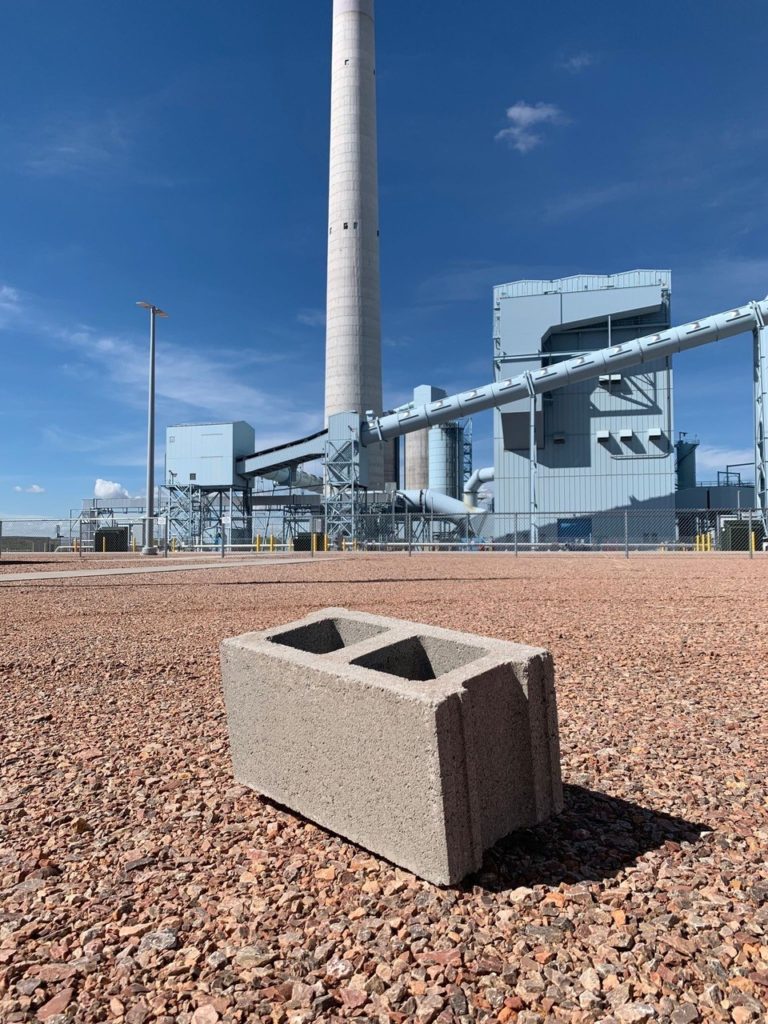Researchers who made 10,000 modified concrete blocks containing fly ash from a coal-based electric cooperative power plant have won an international competition for turning carbon dioxide emissions into useful products.
CarbonBuilt, a team of researchers affiliated with UCLA, is one of two winners of the $20 million NRG Cosia Carbon Xprize. For the past year, researchers have been working at a test production facility drawing fly ash and flue gases from Basin Electric Power Cooperative’s Dry Fork Station near Gillette, Wyoming, to formulate a profitable concrete product.

“Deploying their technology to avoid and reduce emissions from heavy industry will be a gamechanger for global decarbonization in the fight against climate change,” said Marcius Extavour, vice president of climate and energy at XPRIZE.
The UCLA team, which began researching the technique in 2013, has reduced the carbon footprint of its concrete by more than 50% while permanently incapsulating CO2 in construction-grade concrete injected into cement during the curing process.
Carbon Cure Technologies, a second team working at a facility affiliated with a natural-gas-fueled plant in Canada, will split the $15 million final prize award to fund further research.
The 10 finalist teams shared $5 million to pursue projects directing CO2 toward a variety of products, including food additives and plastics, but both winners were focused on improving concrete.
“Concrete is one of the world’s most abundant materials, and a crucial frontier in the fight against climate change,” said Extavour. “The production of Portland cement, the key ingredient that binds concrete and gives it its strength, accounts for approximately 7% of global CO2 emissions.”
Carbon Cure Technologies produced concrete with reduced water content without compromising its reliability. CarbonBuilt’s concrete formulation is a replacement for ordinary Portland cement. It uses low-cost waste materials, potentially reducing storage and disposal costs.
CarbonBuilt’s work was conducted at Wyoming’s Integrated Test Center, a research facility funded by the state of Wyoming with support from NRECA, Denver-based Tri-State Generation and Transmission Association and Bismarck, North Dakota-based Basin Electric Power Cooperative.
“Finding alternative, economic uses of carbon dioxide is paramount to the success of [carbon capture, utilization and storage] in Wyoming and across the nation,” said Wyoming Gov. Mark Gordon. “This is just the first of many opportunities for us to work collaboratively to provide technical solutions to CO2 capture challenges in Wyoming.”
Basin Electric’s coal-based 385-megawatt Dry Fork Station is a lignite-fueled plant in Wyoming’s Powder River Basin. That region now accounts for 40% of the coal used domestically.
Controlling CO2 emissions and reducing fly ash waste are among the goals of “clean coal” research and considered key to preserving the value of coal as the world’s most abundant fossil fuel resource.
“When we started this process, carbon utilization and the incredible opportunity of this industry was relatively unknown,” said Jason Begger, managing director of the Integrated Test Center.
Electric cooperatives were among early supporters of the global competition to advance carbon utilization research. NRECA and its generation and transmission co-op members worked closely with the state of Wyoming to establish the Integrated Test Center and secure research projects for the facility.
“As we plan for a future that depends on electricity as the primary energy source for a majority of the economy, strategic investments in energy innovation that support reliability of an increasingly complex resource portfolio are critical,” NRECA CEO Jim Matheson said.
The two G&Ts are working with NRECA to support and advance federally funded carbon capture and storage technology, which includes development of new compounds and materials with potential commercial value.
“Technology advancement drives economic development and cleaner energy,” said Tri-State CEO Duane Highley. “The Carbon XPRIZE enabled the advancement of novel technology solutions to carbon challenges, and as more innovators come to Wyoming to evaluate technologies, the work of the ITC will continue to deliver important results.”
Basin Electric’s Dry Fork Station, among the most modern coal-based generation facilities in the nation, supports ongoing research aimed at reducing emission and waste concerns related to fossil fuel combustion. “We’re proud to host innovation that could enable a path forward for coal,” said Paul Sukut, Basin Electric Power Cooperative CEO and general manager. “Our cooperative believes an all-of-the-above energy strategy is best for meeting our members’ needs, and coal as a reliable fuel source is part of that.”
In the video below, watch XPRIZE’s Marcius Extavour explain carbon technology:
Derrill Holly is a staff writer at NRECA.